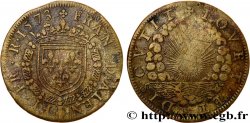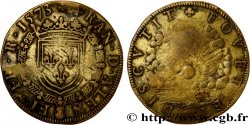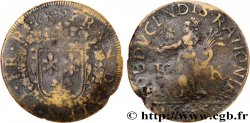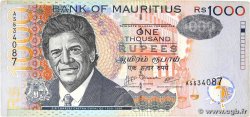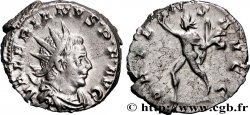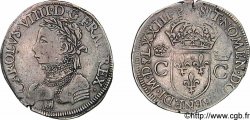fjt_713235 - François, duc d'Alençon puis d'Anjou, Brabant et comte de Flandre FRANÇOIS, DUC D'ALENÇON PUIS D'ANJOU, BRABANT ET COMTE DE FLANDRE frappé à Nuremberg n.d.
75.00 €
Quantità
Aggiungi al carrello

Tipo : FRANÇOIS, DUC D'ALENÇON PUIS D'ANJOU, BRABANT ET COMTE DE FLANDRE frappé à Nuremberg
Data: (1587-1594)
Data: n.d.
Metallo : ottone
Diametro : 27 mm
Asse di coniazione : 12 h.
Peso : 4,18 g.
Orlo : lisse
Grado di rarità : R1
N° nelle opere di riferimento :
Pedigree :
Exemplaire provenant de la Collection MARINECHE
Diritto
Titolatura diritto : FRAN. D. ALEN. FI. FR. R. KK.
Descrittivo diritto : Écu de France couronné et entouré du collier de l'ordre de Saint Michel.
Traduzione diritto : (François d’Alençon fils de France).
Rovescio
Titolatura rovescio : SOBDVCENDIS. RATIONIBV ; À L'EXERGUE : K * K.
Descrittivo rovescio : L’Abondance debout à gauche, tenant un gerbe de la main gauche et tendant la main droite ; autour K - K.
Traduzione rovescio : (Pour faire les comptes).
Commento
Feuardent indique que ce jeton a dû être frappé en France et à Nuremberg avant la prise de possession des Pays-Bas par le duc d’Alençon. Nous pensons, comme Mitchiner, qu’il s’agit d’une copie du jeton Feuardent 6502 (voir jetons suivants) qui sont datés de 1587. Les lettres KK au droit et au revers sont probablement la signature de Kilian Koch, maître nurembergeois de cette époque (en activité de 1587 à 1594).
Feuardent indicates that this token must have been minted in France and Nuremberg before the Duke of Alençon took possession of the Netherlands. We believe, like Mitchiner, that it is a copy of Feuardent token 6502 (see following tokens) which are dated 1587. The letters KK on the obverse and reverse are probably the signature of Kilian Koch, a Nuremberg master of this period (active from 1587 to 1594)
Feuardent indicates that this token must have been minted in France and Nuremberg before the Duke of Alençon took possession of the Netherlands. We believe, like Mitchiner, that it is a copy of Feuardent token 6502 (see following tokens) which are dated 1587. The letters KK on the obverse and reverse are probably the signature of Kilian Koch, a Nuremberg master of this period (active from 1587 to 1594)







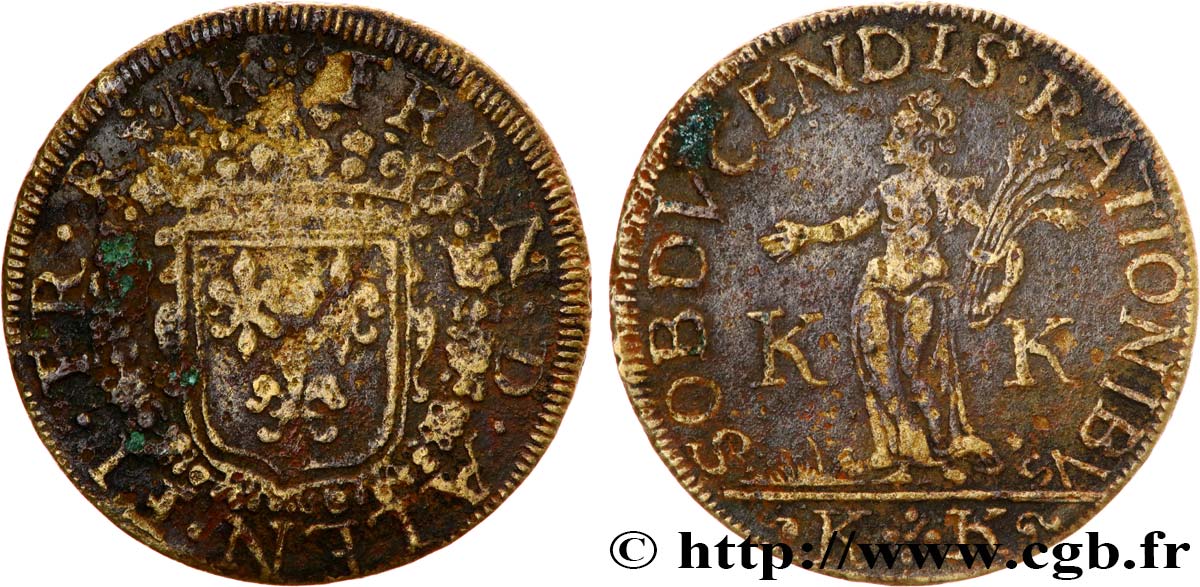
 Segnalare un errore
Segnalare un errore Stampate la pagina
Stampate la pagina Condividi mia selezione
Condividi mia selezione Fai una domanda
Fai una domanda Consegnare / vendere
Consegnare / vendere
 Descrittivo
Descrittivo